1. Pontiac Firebird & Chevrolet Camaro
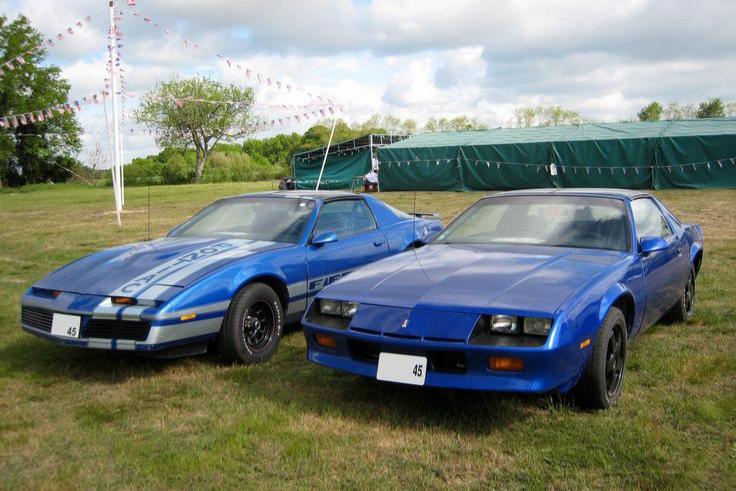
These two General Motors siblings proved that muscle could have personality. The Camaro was often positioned as the sharp, aggressive, and straight-laced rival to the Ford Mustang, focused on precision and an athletic stance. In contrast, the Pontiac Firebird leaned into pure flamboyance; it was the wilder twin, forever immortalized by the “Screaming Chicken” hood decal and its role as the co-star in the 1977 movie Smokey and the Bandit. The Firebird’s sleek, aggressive nose, especially in its Trans Am form, made a clear statement about attitude over mere performance numbers. They weren’t just cars; they were identities that commanded a debate among enthusiasts: which one truly had more soul? Their distinct designs and cultural impact remind us of an era when Detroit poured as much effort into charisma as into horsepower.
2. Ford Mustang (Classic Models)
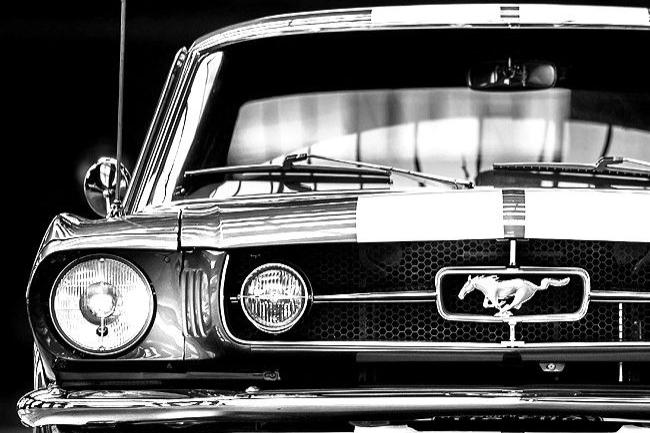
When the Mustang arrived at the 1964 World’s Fair, it instantly redefined what a car could mean to everyday Americans and created an entirely new vehicle class: the pony car. It wasn’t just affordable transportation; it was a symbol of freedom, youth, and individuality. Its long hood, short deck, and signature galloping pony emblem were an immediate hit, leading to over a million sales in its first 18 months. Because it was so stylish and endlessly customizable, the Mustang gave young drivers a true sense of personal expression. From the sleek fastbacks to the high-performance Mach 1s and the legendary Carroll Shelby-tuned versions, these classics carried a cool factor that still echoes in modern Mustangs. Few vehicles have ever tapped into the cultural zeitgeist as completely as this American icon.
3. Chevrolet Corvette Stingray (C3)
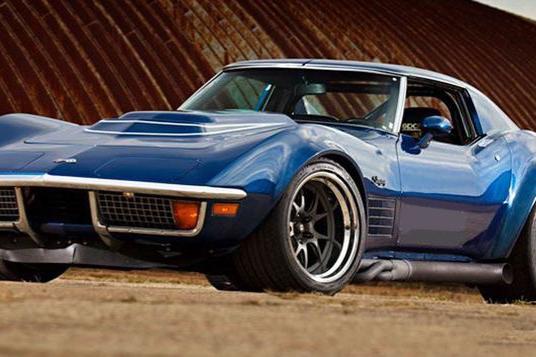
The Corvette Stingray (C3 generation, 1968-1982) was pure, unadulterated automotive drama. Its iconic design, inspired by the Mako Shark concept car, made it look like it was moving 100 mph even when parked. With a long, sweeping hood and exaggerated, flowing fender curves, it was a head-turner in every sense and perfectly captured the bold excess of the era. Beyond the striking fiberglass body, it represented America’s strong ambition to build a world-class sports car that could rival European exotics. The C3 was an object of desire that captured an entire generation’s imagination; it was unapologetically loud, bold, and dramatic. Though today’s Corvettes are far faster and more refined, the C3’s unforgettable, almost sculptural design makes it a permanent fixture in the pantheon of cars with character.
4. Pontiac GTO
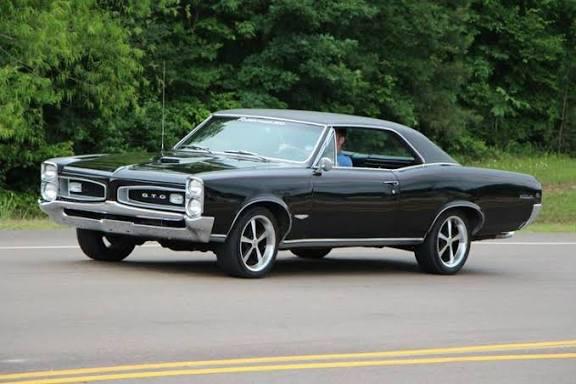
The Pontiac GTO is widely credited with launching the entire muscle car era in 1964 and did so with an unmatched level of brash confidence. It started as a daring option package on the mid-sized Tempest and quickly escalated into a performance legend, later earning the iconic nickname “The Judge.” Its growling V8 engine wasn’t just about speed; it was a pure soundtrack for presence, making every launch from a stoplight a statement. The styling was aggressive, featuring signature hidden headlights and a stance that made it clear this car was not designed to blend into traffic. While performance cars have evolved into precision machines, few carry the raw, unapologetic swagger and attitude of the GTO. It was exciting in a visceral way that modern machines, no matter their performance metrics, rarely manage to duplicate.
5. Dodge Charger (Classic Models)
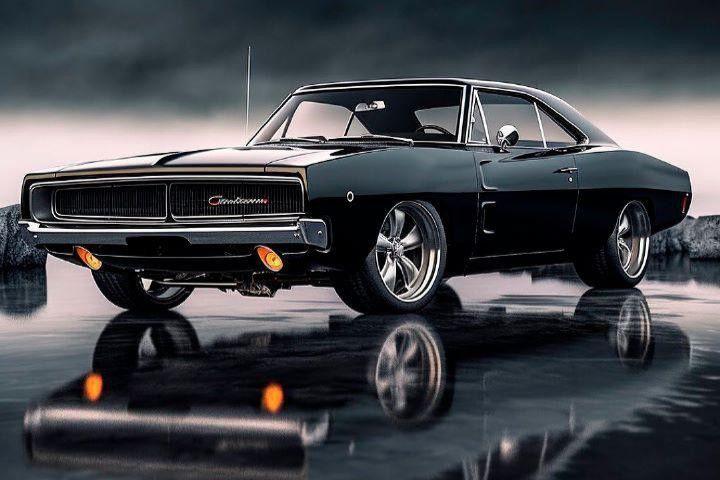
The reputation of the classic Dodge Charger was truly larger than life, solidified by its aggressive ’60s and ’70s design. Its wide, full-width grille, muscular “Coke bottle” side profile, and roaring Hemi or Magnum engines made it an immediate street legend. The Charger wasn’t just a car; it became a cultural character thanks to Hollywood. It was the choice of the villains in the classic chase scene from Bullitt and became an enduring symbol of outlaw spirit as the ‘General Lee’ in The Dukes of Hazzard. This notoriety amplified its raw, unmistakable personality. The original Chargers were on a level of their own, reminding enthusiasts of a time when cars were designed with a sense of theatrical, bold presence that demanded attention and respect on the road.
6. Plymouth Barracuda
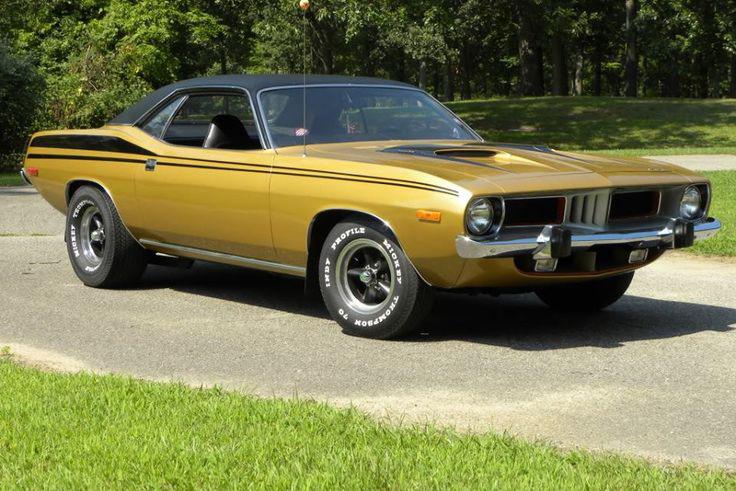
The Plymouth Barracuda, particularly the later E-body models, epitomized the muscle car’s boldness and high-performance attitude. Released a few weeks before the Mustang in 1964 as a fastback Valiant, it truly came into its own with the 1970 redesign, which gave it an aggressive, wide-stance aesthetic. Whether optioned with a high-impact paint color like “Sassy Grass Green” or “In-Violet” and backed by the legendary 426 HEMI engine (creating the coveted ‘Cuda), this car simply oozed personality. Its short production run, ending in 1974, ensured its legacy as one of the fiercest and most visually striking muscle cars of the era. Though it didn’t survive the decade, the Barracuda remains alive in the nostalgia and collector circles as the perfect example of high-octane, unforgettable design.
7. Plymouth Road Runner
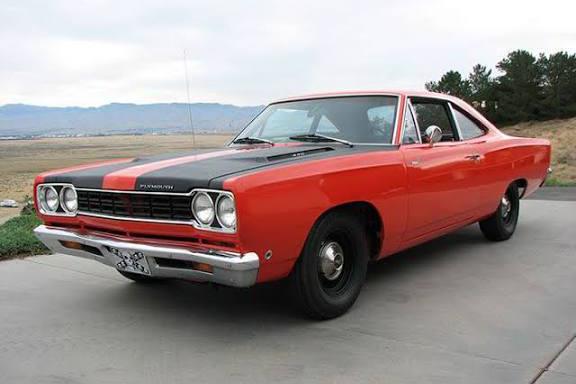
The Plymouth Road Runner introduced a brilliant and often-missing element to the muscle car formula: a sense of humor. Named after the Warner Bros. cartoon character, it even came equipped with a signature “beep-beep” horn and decals, adding a lighthearted twist to its serious performance credentials. Its entire ethos was built around affordable fun: it was a stripped-down, mid-sized car focused purely on packing a massive V8 engine and going fast without the heavy price tag of a luxury interior. Don’t let the cartoon inspiration fool you; under the hood, it packed serious power from engines like the 440-cubic-inch and the HEMI. The Road Runner showed that performance didn’t have to be stuffy or exclusive. It was bold, a little silly, and absolutely unforgettable, becoming one of the most colorful and charismatic vehicles of the entire muscle car era.
8. Dodge Challenger (Classic Models)
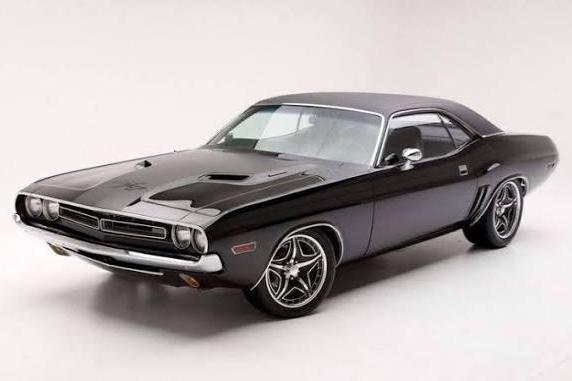
When the Dodge Challenger roared onto the scene in 1970, it was the final entry into the pony car wars but came with a distinctive wide-stance and aggressive style that immediately set it apart. Sharing the E-body platform with the Barracuda, the Challenger offered an array of engine options that thrilled enthusiasts and gave drivers a potent mix of style and street presence. Its design screamed confidence, and its muscular presence on the road was undeniable. The car allowed for significant personalization, from shaker hoods to vibrant paint colors, giving drivers an edge of individuality. While today’s models successfully revive the nameplate, the 1970-1974 originals were special: raw, loud, and perfectly imperfect in a way that captured the spirit of a high-octane decade.
9. Mercury Cougar
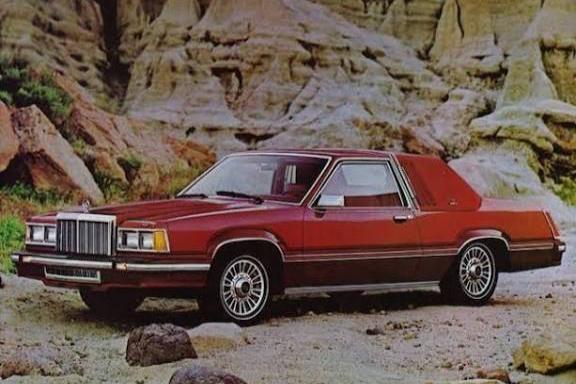
Often overshadowed by its Ford Mustang sibling, the Mercury Cougar cleverly carved out its own unique identity in the pony car segment. It was conceived to offer muscle with a layer of sophistication and class, appealing to drivers who wanted performance without sacrificing comfort or refinement. Key design elements like its hidden headlights and a more luxurious interior set it apart. The Cougar essentially became the Mustang’s upscale, slightly more mature cousin, offering a balanced blend of power and prestige. This combination of a sporty chassis and a distinctive, refined look gave it a singular character that stood out in an era crowded with competitors. It proved that car personality didn’t always have to be brash; sometimes, a little subtle, feline charm leaves an equally lasting mark.
10. Cadillac Coupe de Ville
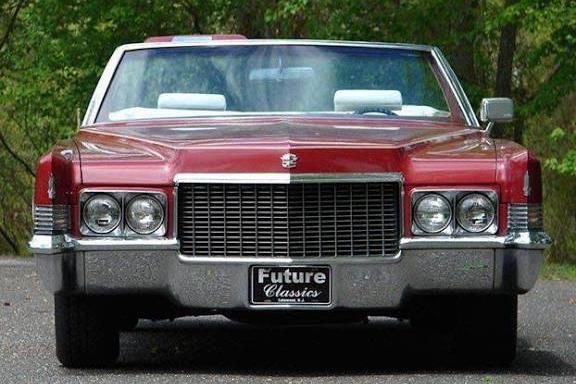
If one car could truly embody the concept of American automotive extravagance, it was the classic Cadillac Coupe de Ville. From the mid-1950s through the early 1970s, it was a magnificent statement on wheels: immense in size, often dripping in chrome, and featuring dramatic styling elements like the iconic tailfins of the late ’50s that looked ready to take flight. Driving a Coupe de Ville was never about practicality or efficiency, it was purely about making a grand entrance and commanding presence. Owning one was like carrying a piece of royalty into every driveway. Modern luxury cars often feel restrained by the need for efficiency and subtlety, but these classic Cadillacs never held back, representing a time when bold, oversized design was the ultimate expression of success and character.
11. Cadillac Seville
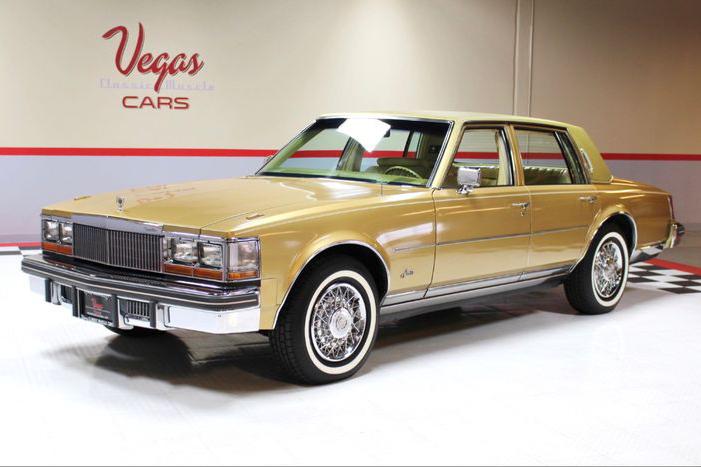
The Cadillac Seville marked a strategic pivot for the brand in the mid-1970s, steering away from pure size toward a more urbane sophistication. It was introduced as Cadillac’s first serious attempt at a smaller, more maneuverable luxury car designed to compete with high-end European imports. With its distinct, sharp-edged profile, it had a style all its own, often featuring elements like vinyl roofs and wire wheels that became symbols of late ’70s luxury flair. Though some critics mocked its size, it had character in spades: a bold, angular confidence that was entirely unique. Unlike many of today’s streamlined luxury sedans that tend to blend together, the Seville dared to look different. It successfully captured the optimistic spirit of an era when Cadillac was still pushing new trends in domestic luxury design.
12. Buick Riviera
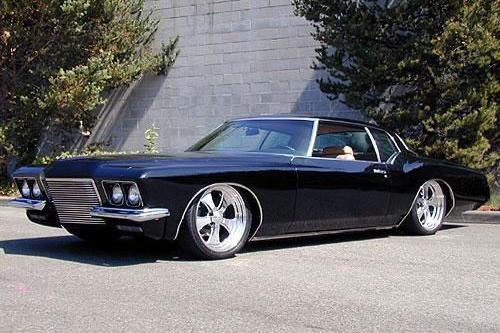
The Buick Riviera consistently stood out in a crowded market as a beacon of American personal luxury, but the early 1970s model is most celebrated for its high-drama design. The 1971-1973 model featured a striking “boat-tail” rear window and roofline, a bold and almost architectural shape that remains one of the most striking artistic shapes in automotive history. Combined with hidden headlights, plush, wrap-around interiors, and a powerful V8, it was elegance wrapped in a confident attitude. The Riviera was a car of immense artistic flair, proving that a vehicle could be both a status symbol and an unforgettable piece of functional sculpture. Cars today prioritize aerodynamics and uniformity, but the Riviera was proof that audacious, beautiful design could be the defining element of a car’s character.
13. Chrysler Cordoba
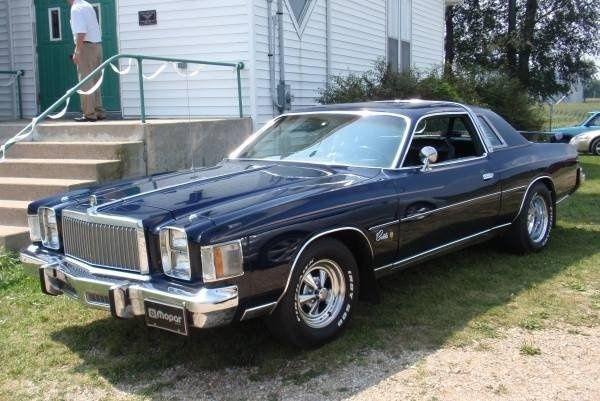
The Chrysler Cordoba is a rare example of a car whose character was successfully defined by its marketing. The line, “You deserve rich Corinthian leather,” delivered by actor Ricardo Montalbán, became an iconic piece of 1970s pop culture advertising. Beyond the famous slogan, the Cordoba was a large, comfortable, and stylish personal luxury coupe aimed squarely at the aspiring middle class. Its signature elements, including opera windows, bold curves, and a genuinely inviting interior, made it feel special. It may not have been a muscle car, but it proved that cars could still be a source of attainable aspiration and charm that transcended simple performance specifications. The Cordoba was a smooth, well-dressed coupe that reminded drivers that a car could make them feel successful and comfortable.
14. Lincoln Continental (1970s Models)
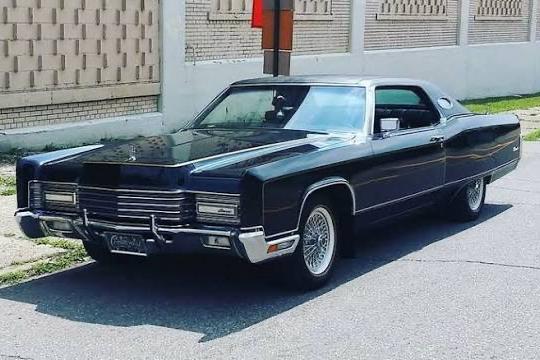
The Lincoln Continental of the 1970s was less a car and more a mobile lounge of American prestige. Massive in scale, impeccably elegant, and undeniably iconic, its character was defined by its commanding size and the famous rear-hinged “suicide doors” on the four-door sedan, which made it instantly recognizable. It wasn’t built for racing or cornering; it was built to make an entrance and project power. The sheer presence of the Continental, often seen carrying politicians, executives, or even Elvis, made the driver and passengers feel larger than life. While modern luxury brands struggle to create genuine distinction, the legacy of the Continental’s unapologetic scale and grand style lingers in pop culture. It was a true statement piece that defined an era of luxury.
15. AMC Pacer
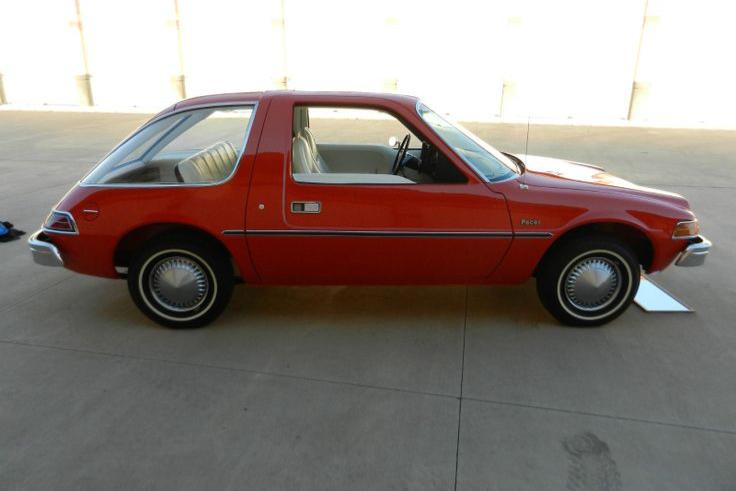
The AMC Pacer was, without question, strange, but its oddness is precisely why it remains one of the most unforgettable cars in history. Introduced in 1975, it was nicknamed the “fishbowl” for its enormous glass area and distinctive, rounded shape, making it look unlike any other car on the road. Some found it jarringly ugly, while others saw it as a futuristic, brave attempt at a compact car. Critically, nobody ignored it. Its wide stance (it was wider than many full-sized cars) and quirky design have made it a cult classic today. In a world of safe, homogenized conformity, the Pacer dared to be weird, bold, and entirely itself. That willingness to embrace eccentricity is what gave it an enduring, lovable character that earned it a permanent place in automotive lore.
16. Ford Pinto
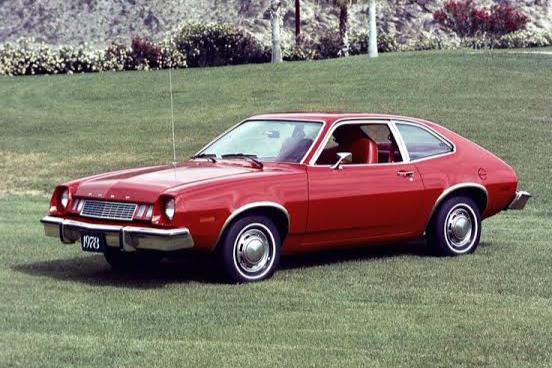
The Ford Pinto is one of the most historically complex cars on this list, famous less for its design and more for its serious safety scandal in the 1970s. Despite its dark cloud, the car itself was a massive cultural phenomenon. It was designed to be a cheap, compact, and ubiquitous domestic competitor to the surging European and Japanese imports. The Pinto was everywhere, parents bought them, teens learned to drive in them, and it became a tangible, four-wheeled symbol of the 1970s. Though flawed, its immense presence on American roads meant it left a significant and indelible mark. The Pinto reminds us that even imperfect or controversial cars can define an era, embodying both the challenges and the shifts in automotive history. Its memorability, for better or worse, is a testament to its character.
17. AMC Gremlin
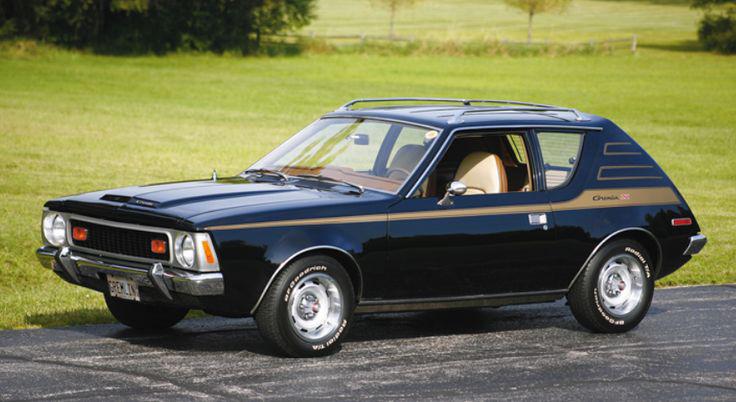
The AMC Gremlin was another glorious oddball from American Motors Corporation that earned its character through sheer, bold unconventionality. Debuting on April Fool’s Day in 1970, the car was created by chopping off the tail of a subcompact AMC Hornet, resulting in a distinctive, if awkward, wedge-like profile. Critics were quick to mock its unconventional, chunky aesthetic, but it developed a loyal following among drivers who genuinely appreciated its uniqueness. It wasn’t glamorous, fast, or even conventionally good-looking, but it didn’t care. The Gremlin’s charm was its stubborn refusal to conform to the design norms of the time, making it instantly recognizable and lovable to its devotees. It is a perfect reminder that sometimes, the most enduring character comes in the form of confident, lovable weirdness.
18. Volkswagen Thing
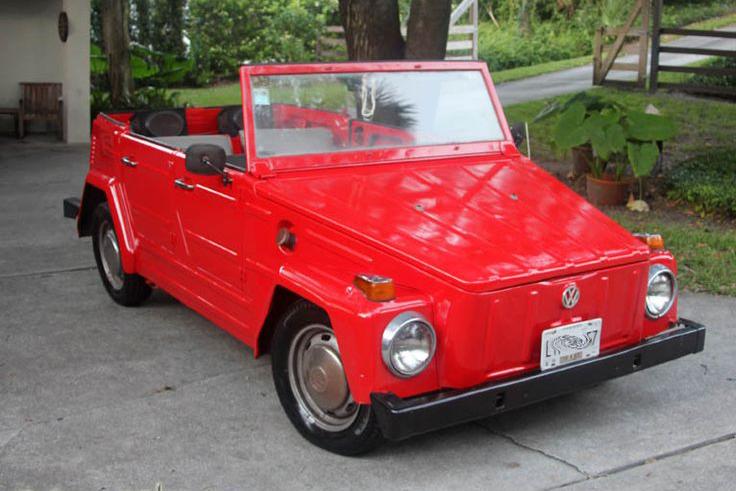
The Volkswagen Thing (officially the Type 181) was truly bizarre, boxy, and looked like it had been repurposed from a military barracks rather than a suburban garage. Designed for the West German army, its aesthetic was defined by flat, interchangeable body panels, a removable roof, and doors that lifted straight off their hinges. This military-inspired design made it both impractical for everyday commuting and incredibly fun for almost everything else. Whether it was at the beach, on a dusty trail, or just cruising around town, the Thing drew attention and delighted onlookers. It was never refined, elegant, or fast, but its character was defined by its pure, unvarnished playfulness. In a world of increasingly predictable sedans, the Thing stood out as a radically different, bold, and eccentric choice.
19. Chevrolet Vega
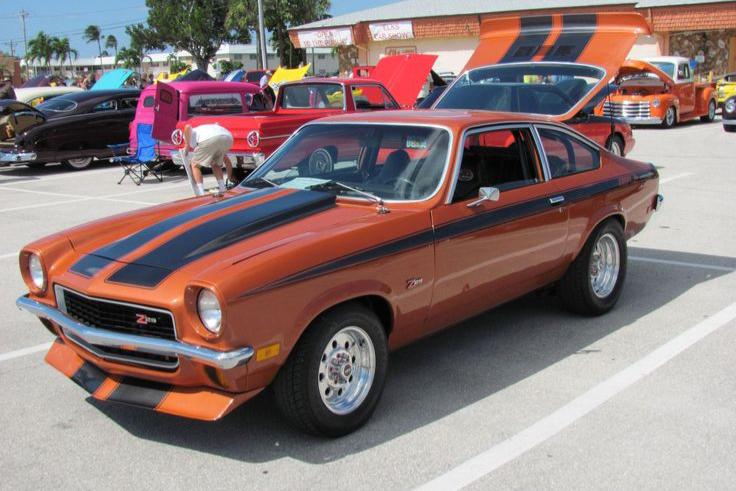
The Chevrolet Vega was a high-stakes effort from General Motors, designed to be small, stylish, and fuel-efficient, a crucial shift in American car priorities in the early 1970s. Its sleek, attractive lines and aluminum-block engine were intended to appeal to a new, younger generation of buyers. The Vega certainly stood out for its progressive design, which broke away from the traditional massive car aesthetic. However, its initial charm was tragically tarnished by a raft of severe reliability and engine durability issues. Despite its flaws, the Vega was a necessary risk for GM, a genuine attempt at innovation and adaptation. Its very existence as an ambitious, if imperfect, experiment gave it character, reminding us that an industry that takes risks, even those that fail, is often one with more personality.
20. Chevrolet Caprice Classic
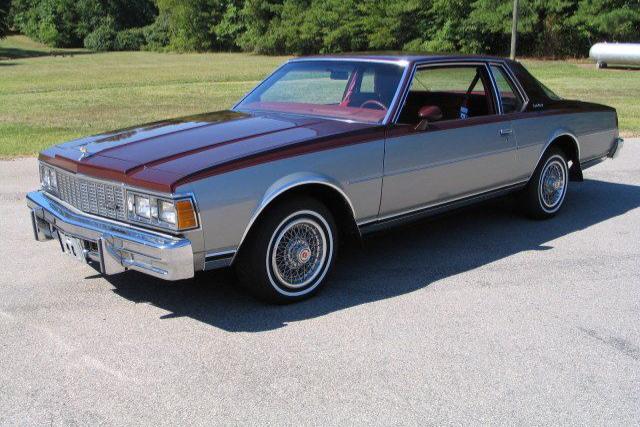
The Chevrolet Caprice Classic was, for decades, the absolute standard for the dependable American family sedan. Especially in its definitive “boxy but proud” design of the late 1970s and 1980s, it wasn’t flashy or aspirational, but it exuded a quiet, confident American character. It was famous for its spacious interiors, its predictable, smooth-sailing ride, and a touch of familiar style, making it the staple of suburban driveways and fleet purchases across the country. More Americans grew up in the back seat of a Caprice, listening to music, playing road trip games, or fighting with a sibling, than almost any other car. This unique blend of ubiquity and familiarity gave it a special kind of heartfelt character. It was the unsung hero of everyday life, and that nostalgia keeps it firmly alive in memory.
21. Ford Country Squire Wagon
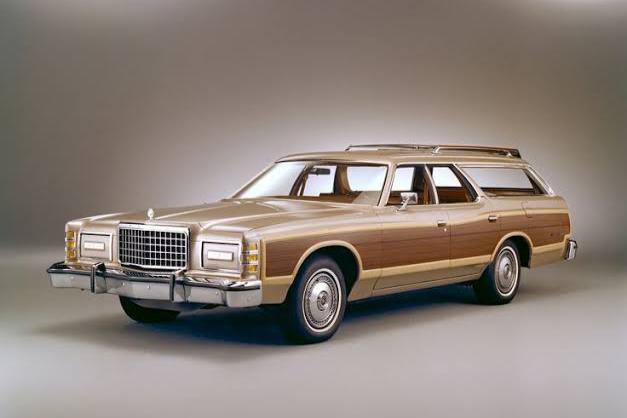
The Ford Country Squire Wagon was the undisputed king of the family haulers for decades. Its character was built around two iconic features: the immense, cavernous interior and the distinctive, simulated wood paneling, which, despite its artificiality, became a hallmark of Americana. Its most beloved feature for generations of children was the optional, rear-facing third-row seat, which turned every trip into a mini-adventure and a mobile social lounge. Long before the rise of the modern SUV, this was the family car that reliably carried generations of Americans on their vacations, carpools, and life events. The Country Squire’s deep, enduring character came not from speed or flash, but from the countless memories made inside it, making it an irreplaceable part of the collective American memory.
22. Oldsmobile Cutlass Supreme
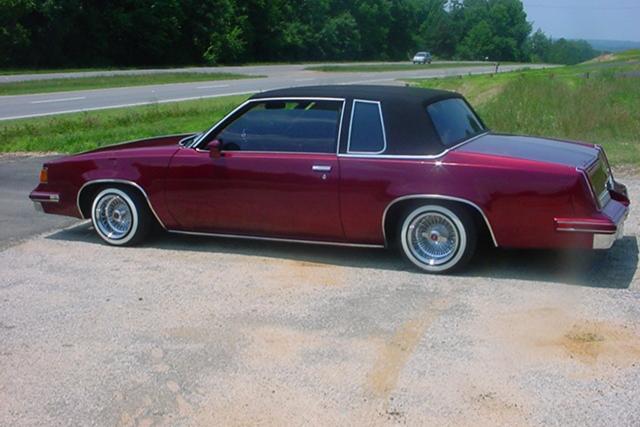
The Oldsmobile Cutlass Supreme was a cultural force, defining the automotive landscape as one of the best-selling cars of the 1970s and 1980s. Its genius lay in hitting a perfect sweet spot for American drivers: it was practical enough for a family yet stylish enough for a younger buyer. Its distinctive, often pillarless coupe roofline and balanced blend of reliability, approachable flair, and performance made it an instant household name. Crucially, the Cutlass wasn’t rare or exotic; it was everywhere, from high school parking lots to middle-class driveways. That ubiquity gave it a special kind of shared character: almost every American of a certain age has a story involving a Cutlass Supreme, whether they owned one, rode in one, or knew someone who did.
23. Pontiac Bonneville
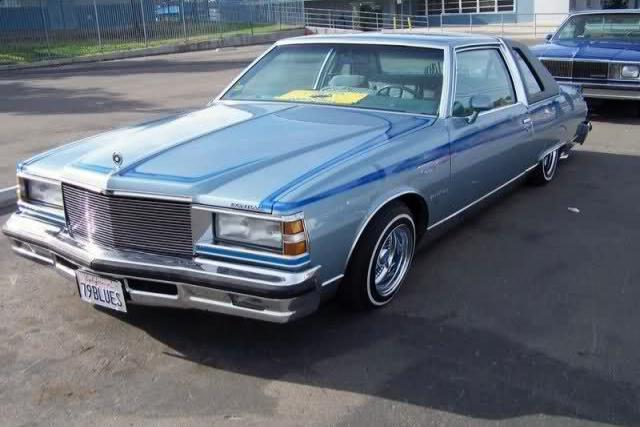
The Pontiac Bonneville was the full-sized car that offered an air of affordable luxury and bold presence. Characterized by its generous dimensions, spacious interiors, and the distinctive, wide grilles that defined Pontiac styling, it was a favorite with families who wanted a car that felt a little more upscale and confident. It wasn’t designed to be a high-performance machine, but it was dependable and styled with a quiet dignity. The Bonneville’s strength lay in its ability to be an aspirational car without being financially unattainable. It successfully represented a perfect middle ground between everyday practicality and a touch of prestige, and that careful balance gave it an enduring and relatable character that lasted through multiple design generations.
24. Dodge Dart
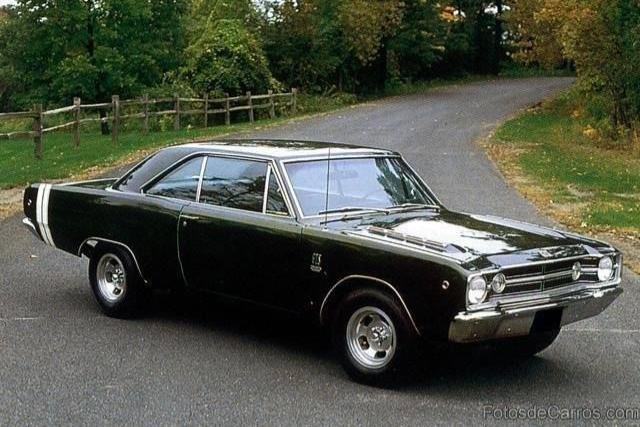
The Dodge Dart proved that a car could be simple, affordable, and incredibly reliable without ever being boring. Launched in the early 1960s as a compact, approachable sedan, it won hearts through its longevity and straightforward honesty. It was the quintessential American workhorse. Families drove their Darts for decades, often passing the tough little car down to new, teenage drivers. It didn’t possess the flashy charisma of a muscle car or the prestige of a luxury sedan, but it had an undeniable heart and stick-to-itiveness. The Dart was a humble, unpretentious car with just enough unique styling touches and durability to earn genuine respect and admiration. It is a perfect testament to the fact that even modest, everyday cars can have a profound and memorable character.
25. Jeep Wagoneer
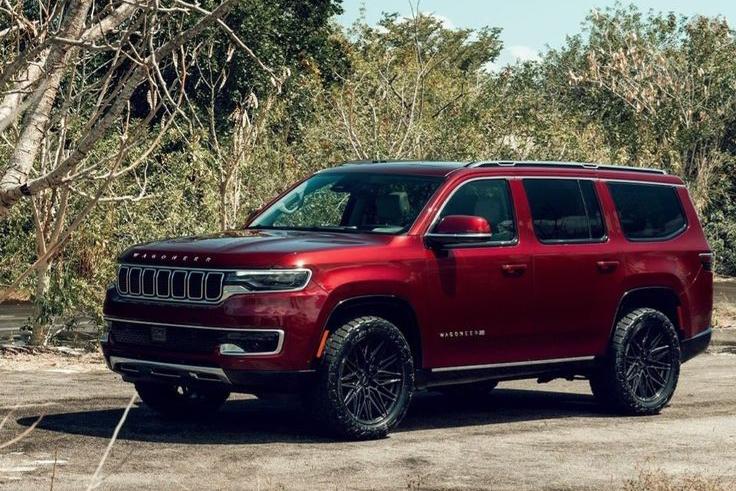
The original Jeep Wagoneer was a revolutionary pioneer, successfully blending the ruggedness of an off-road SUV with the comfort and prestige of a luxury family wagon, long before the modern SUV class was formally established. Its character was defined by its distinctive design, including the famous simulated wood paneling on the sides (especially the “Grand Wagoneer” variant), roomy interiors, and an undeniable spirit of adventure. It set the foundational template for the modern luxury SUV but did so with an inimitable soul. Today’s high-tech SUVs may dominate the market, but none feel quite as authentic, iconic, or emotionally tied to the idea of outdoorsy elegance as the original Wagoneer. It was a new era of motoring, but with a palpable, enduring character.
26. DeLorean DMC-12
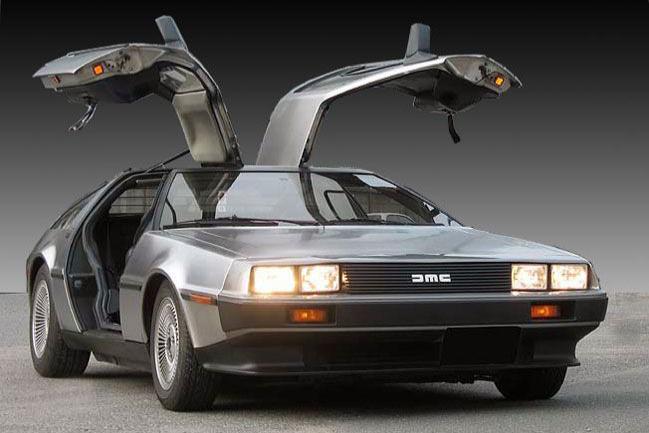
Few cars have achieved such a towering level of iconic status despite having such a short, troubled lifespan. The DeLorean DMC-12 was instantly recognizable, thanks to its signature unpainted stainless steel body panels and dramatic, upward-opening gullwing doors, making it look like it had literally arrived from the future. Its character was cemented for all time by its starring role as a time machine in the 1985 movie Back to the Future, which ensured its legend completely outlived its manufacturing company. The car itself was not a commercial success, it wasn’t the fastest or the most reliable, but that was irrelevant. The DeLorean had such an overwhelming personality, such an audacious design statement, that decades later, it remains one of the most instantly recognizable and culturally significant cars ever built.
27. Plymouth Road Runner Superbird
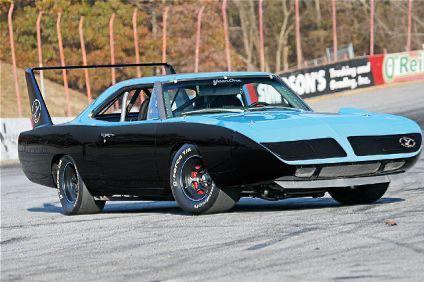
The Plymouth Road Runner Superbird was perhaps the most outrageous expression of the muscle car era. It was designed for a single purpose: to dominate NASCAR high-speed tracks, which required the addition of its famous massive rear wing and aerodynamic “wedge” nose cone. This equipment made it look like nothing else on the public road, earning it immediate, undeniable character. The cartoon Road Runner horn and the availability of bold, high-impact paint colors added a playful, almost defiant twist to its brutal performance. The Superbird was completely unsubtle, which was its greatest charm. It remains a fascinating relic and is proof that cars could once be outrageously styled and memorable in ways that modern, aerodynamically safe designs rarely permit.
28. Volkswagen Beetle (Classic)
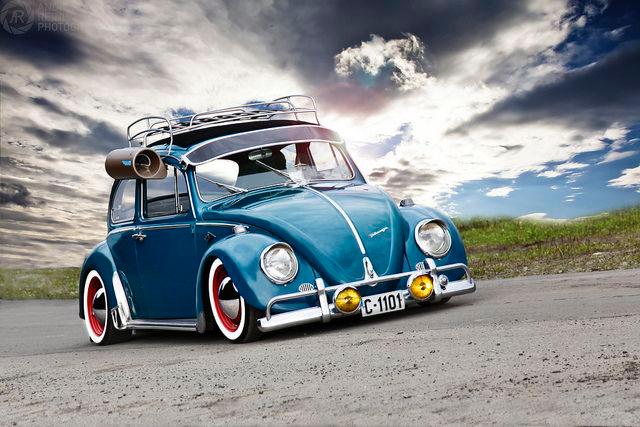
The classic Volkswagen Beetle may not have been powerful, luxurious, or fast, but it possessed a cheerful, infectious character in every one of its rounded curves. It became a global phenomenon because it was affordable, incredibly simple to maintain, and endlessly customizable. The Beetle became a ubiquitous symbol of the counterculture, individualism, and a kind of lovable, unpretentious underdog spirit. Millions of Beetles were sold, yet each one felt uniquely personal to its owner, whether it was painted with flower-power graphics or used for a cross-country adventure. The car was proof that genuine charm and a unique personality mattered far more than complex engineering or raw horsepower, earning it a place as one of the most recognized and beloved cars of all time.
29. Volkswagen Microbus
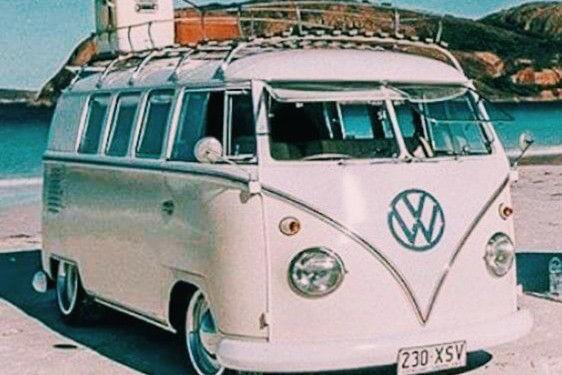
Few vehicles carry the same profound cultural weight and warm, fuzzy feelings as the classic VW Microbus (officially the Type 2). It was notoriously slow, but its unique character was defined by its association with freedom, community, and the 1960s counterculture. With its iconic, boxy shape, massive windows, and surprising versatility as a camper or people-mover, it became a moving symbol of an era, perfect for surfboards, road trips, and peace rallies. Its quirky, utilitarian design stood out everywhere it went. While today’s vans and people-movers are infinitely more efficient and safe, none can inspire the same emotional connection or sense of wanderlust. The Microbus wasn’t merely a car; it was a lifestyle statement and a mobile piece of history.
30. Datsun 240Z
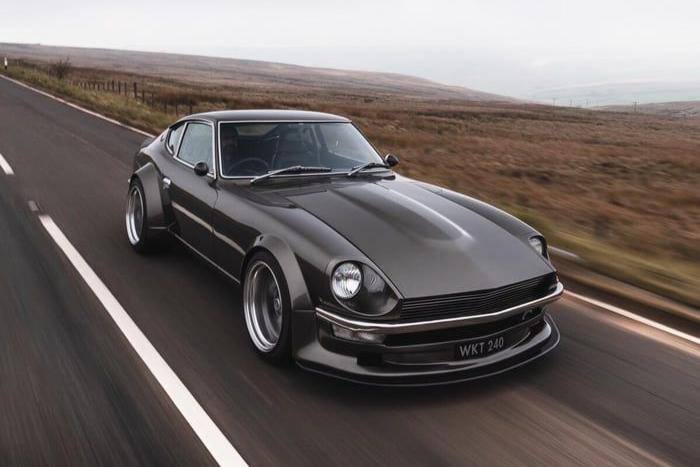
The Datsun 240Z (and its successors) launched in 1970 and single-handedly brought affordable, world-class sports car performance to a wider American audience. With its long-hood, short-deck proportions, sleek fastback styling, and impressive handling, it boldly challenged established, expensive European rivals while significantly undercutting their price tags. For a generation of drivers, the 240Z offered their first real, accessible taste of high-quality performance driving. The car possessed a sophisticated but pure soul, and its influence is still evident in modern sports car design. It was Japan’s first major statement in the performance market, a gift to drivers who craved excitement, style, and unforgettable character without breaking the bank.
31. Toyota Celica (Classic)
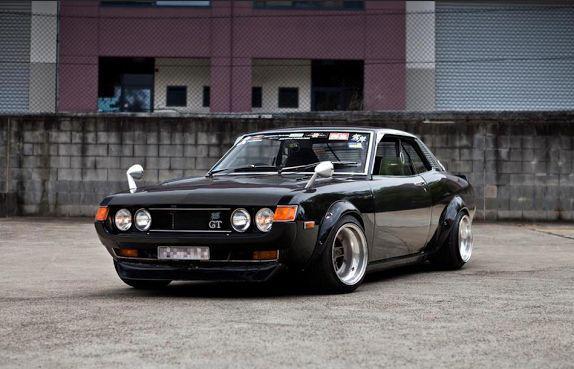
The classic Toyota Celica expertly blended sporty, compact looks with the hallmark dependability and accessible pricing of the emerging Japanese import market. Starting in the early 1970s, its character evolved through several distinct generations, from the sleek “pony car”-inspired first models to the angular, aerodynamic fastbacks of the 1980s. Its charm lay not in overwhelming power, but in how lightweight, responsive, and fun it was to drive. It proved that imports could have genuine flair, appealing to young drivers who sought a sharp-looking, reliable car that didn’t feel like a heavy family sedan. The Celica carved out a significant, fondly remembered place in American car culture as a symbol of accessible, reliable sportiness.
32. Honda Civic (Early Models)
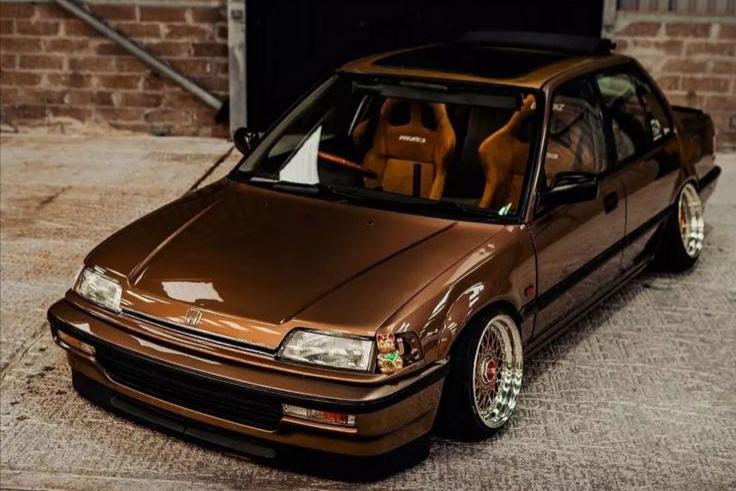
The early generations of the Honda Civic, starting in 1973, were small, humble, and initially defined by their unpretentious practicality and incredible fuel efficiency. While it lacked the flash of a muscle car, it quickly won hearts with its reliable, durable engineering, a crucial factor during the volatile fuel crisis years. It had a unique, endearing underdog charm because it represented a fundamental shift toward smarter, smaller, more thoughtfully designed cars. For countless people, the cheerful, durable, and affordable Civic was their first car, and that foundational role gave it a deep, personal character rooted in dependability and nostalgia. It may not have been a high-performance machine, but it earned the public’s love and enduring character in its own humble way.
33. Renault Le Car
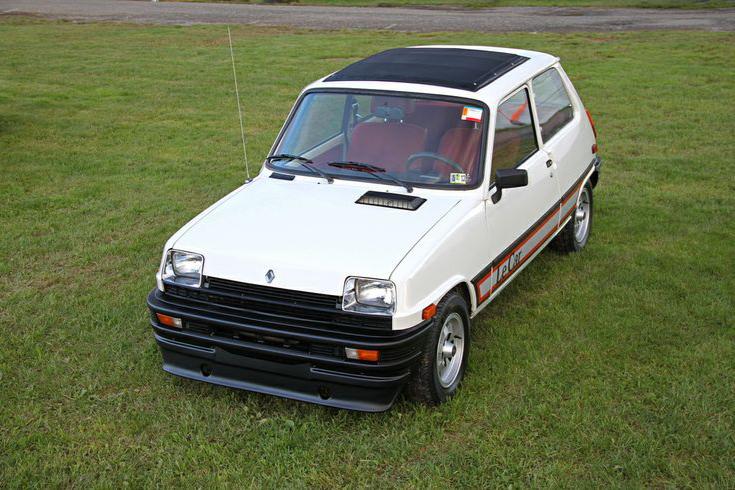
The Renault Le Car (a version of the Renault 5) was delightfully quirky, compact, and decidedly European, creating a strong sense of character simply by its presence on American roads. Amidst the prevailing American giants, its small size and funky, hatchback design made it a distinctive novelty. While its mechanics were often criticized and it was never a sales leader, the car was memorable. Some drivers found it charming and perfectly suited for urban life, while others found it bizarre. Ultimately, the Le Car’s character lay in its bold, unapologetic European eccentricity and its refusal to be tamed by American styling norms. Cars like the Le Car show that personality doesn’t require perfection, sometimes, it just takes the courage to be radically different.
34. Plymouth Fury (Christine Fame)
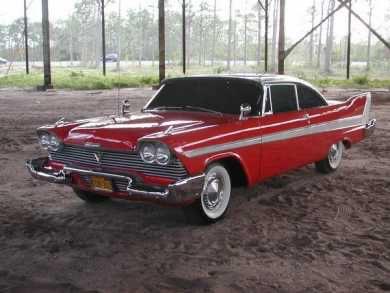
The Plymouth Fury was already a handsome, full-sized sedan in the late 1950s, but its place in history was cemented by its central, terrifying role as the sentient, murderous car in Stephen King’s novel Christine. Its styling, characterized by sharp fins, massive chrome bumpers, and an aggressive, almost predatory stance, gave it an imposing personality even before its fictional horror fame. The Christine legend provided a narrative that made the Fury feel like it was truly alive, carrying an aura that transcended its sheet metal. While countless other large sedans from that era faded into memory, the Fury’s character endures, a rare example of a car whose cultural impact secured its legendary status and recognizability.
35. Chevrolet El Camino
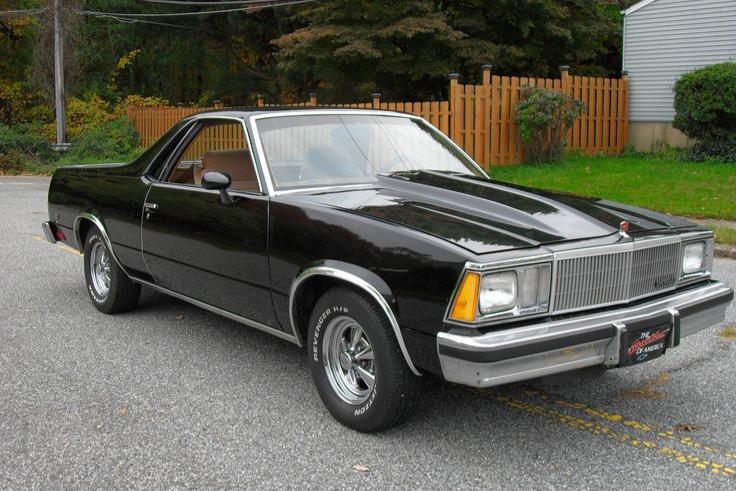
The Chevrolet El Camino was a vehicle that simply refused to be categorized, and that very ambiguity gave it a strong, enduring character. Was it a car? Was it a truck? The answer was always a confident both. By expertly blending the front half of a car (often sharing its platform with the Chevelle or Malibu) with a practical cargo bed, it became known as a “coupe utility” vehicle. Its design was both versatile and stylish, leaning toward cool and unique rather than pure, utilitarian functionality. The El Camino wasn’t meant for everyone, but its distinct profile and unapologetic blending of categories made it stand out. That kind of bold, experimental design is rarely attempted today, ensuring the El Camino remains an unforgettable and highly charismatic vehicle.
36. Ford Thunderbird
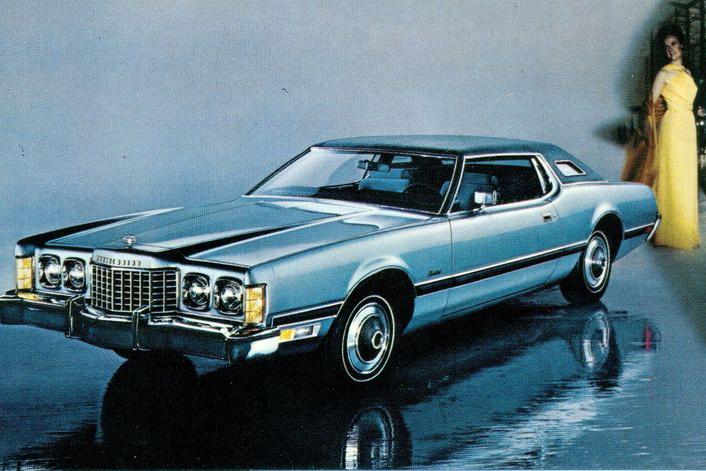
The Ford Thunderbird (T-Bird) had a famous evolutionary journey, beginning in 1955 as a sleek, two-seat personal sports car and later evolving into a larger, personal luxury coupe. In both its two-seater and its later, four-seat coupe forms (especially the classic ’60s models), it had undeniable flair and glamour. Defined by its long hood, clean lines, and plush interiors, it was designed for cruising in style, not raw performance. The T-Bird successfully balanced comfort with a sophisticated, memorable character that few cars could match. It was a cultural icon, glamorous, uniquely American in its boldness, and a staple of movie screens and boulevards, making the simple act of driving feel like an exclusive event.
37. Studebaker Avanti
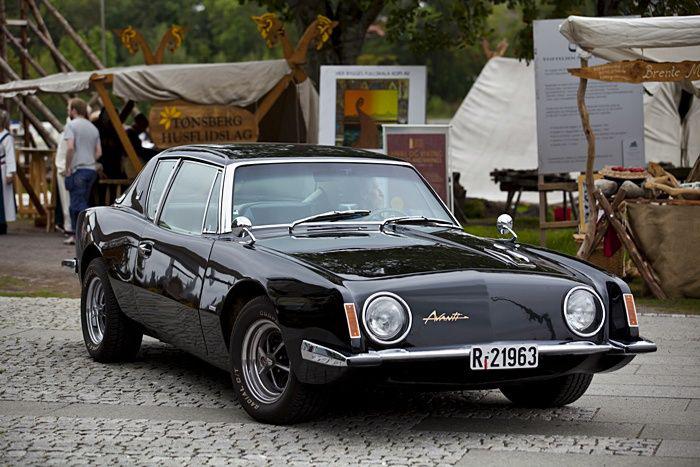
The Studebaker Avanti was a product of radical, futuristic thinking. When it launched in 1962, it was truly ahead of its time, featuring a sleek, European-inspired body, innovative fiberglass construction, and a distinctive “bottom-breathing” front end that lacked a conventional grille. Its design was daring and experimental, pushing aesthetic boundaries that mainstream automakers avoided. Although it was short-lived, production ended with Studebaker’s closure, it left an indelible impression as a car of true individuality and vision. The Avanti proved that smaller companies could create vehicles with profound aesthetic character, and its sheer uniqueness secured its place as a collector’s classic and a symbol of independent automotive design.
38. Nash Metropolitan
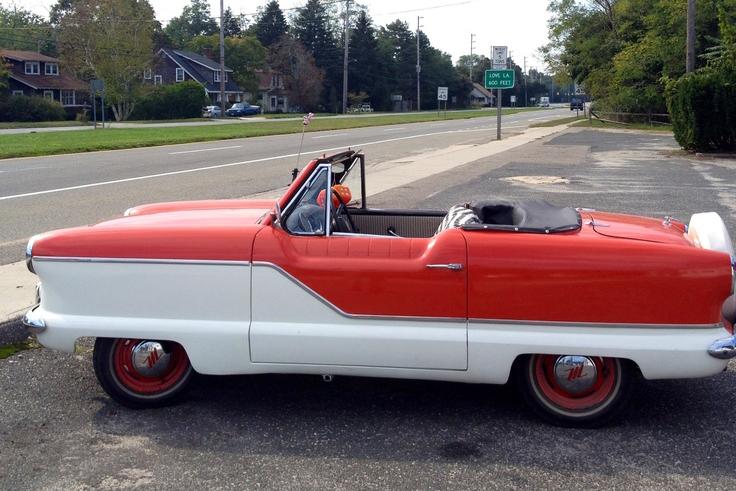
The Nash Metropolitan was an immediate curiosity in the 1950s, tiny by American standards and overflowing with a quirky, cheerful character. Designed as an economical commuter car, its compact proportions, large, friendly face, and standard two-tone paint jobs made it look like a toy compared to Detroit’s massive land yachts. Its small size made it surprisingly practical for crowded city environments, and its friendly, unconventional style quickly won over a dedicated following. The Metropolitan’s character came from its utter refusal to conform to the oversized American car ideal, proving that a compact car could be just as memorable and charismatic as the biggest V8 coupe.
39. Packard Caribbean (Final Era)
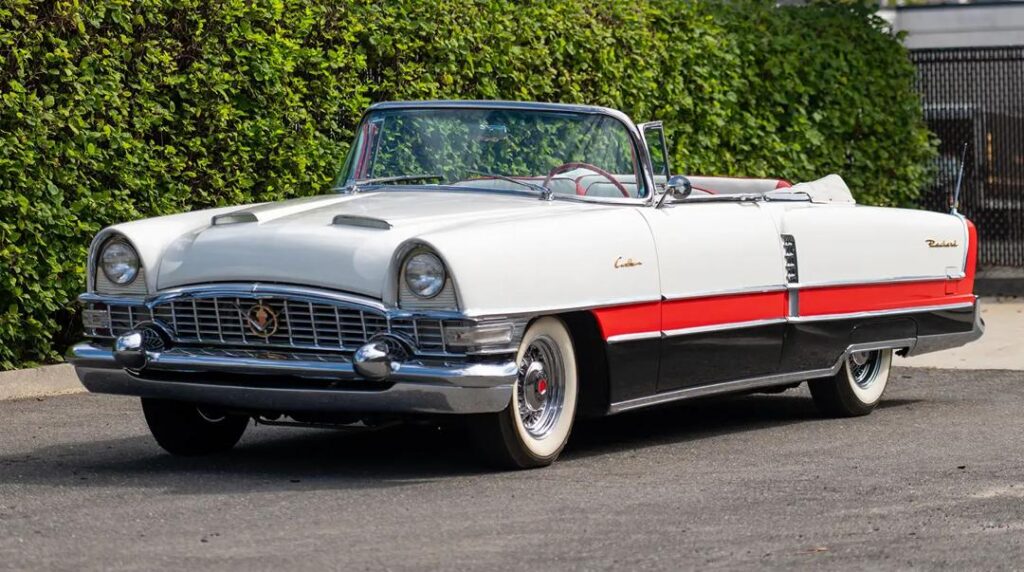
The Packard Caribbean represented one of the last, grand efforts by the storied luxury brand to maintain its prestige in the competitive 1950s market. Its character was one of elegant, almost desperate grandeur. These cars were defined by bold styling, particularly the generous use of chrome, dramatic two-tone or tri-tone paint schemes, and the sheer size of the convertible models. The Caribbean was meant to dazzle, symbolizing an era when cars prioritized luxury and visual splendor above all else, even if practicality and engineering innovation sometimes took a back seat. The car remains a powerful, poignant symbol of an automotive age that was coming to an end, a luxurious final gasp of a legendary brand.
40. Hudson Hornet
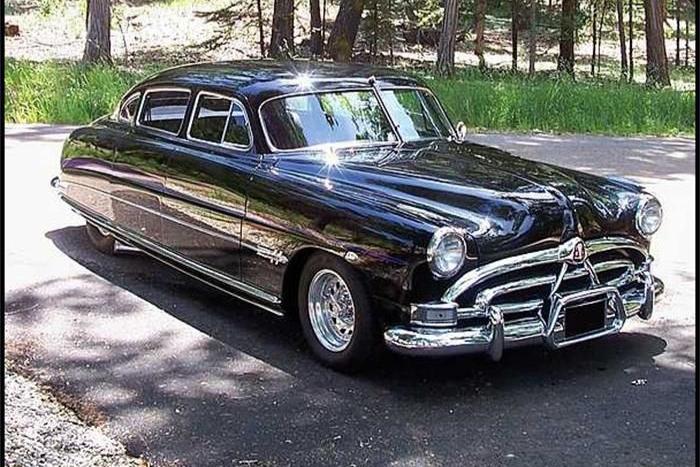
The Hudson Hornet earned its character not through outrageous styling but through pure, understated dominance on the racetrack. In the early 1950s, the Hornet became a legend by utterly dominating stock car racing, thanks in part to its clever “step-down” design that provided a lower center of gravity and superior handling. It wasn’t flashy, but it carried an unmistakable aura of quiet confidence and proven performance. Its legend was later introduced to a new generation when it was immortalized as the wise and dignified Doc Hudson in Pixar’s Cars. The Hornet’s lasting character lies in its perfect blend of racing substance and understated, dignified charm, a rare and unforgettable combination.
41. Chevrolet Bel Air
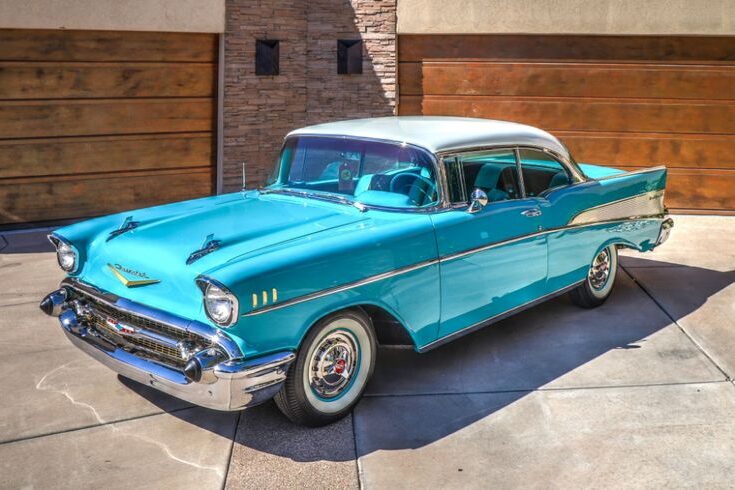
Cars once had personalities that spoke louder than their engines, and few did it better than the Chevrolet Bel Air. Born in the 1950s, it wasn’t just a car; it was a statement of optimism. With its sweeping chrome fins, pastel colors, and glinting two-tone paint, the Bel Air captured America’s postwar confidence. It became a centerpiece of drive-ins, Sunday drives, and parades, representing a golden age of design when cars wore smiles. The Bel Air didn’t just transport people; it carried dreams, pride, and the unmistakable spirit of an era that believed style could change the world.
42. Ford Fairlane
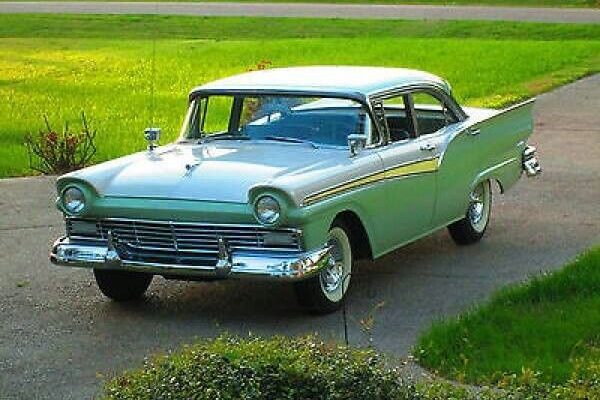
The Ford Fairlane exuded confidence with its bold lines, chrome grilles, and playful color schemes that mirrored the excitement of mid-century America. Introduced in the 1950s, it symbolized upward mobility and personal style. Whether cruising through small towns or gliding down city boulevards, the Fairlane was about presence and poise. Its long hoods, curved fenders, and subtle elegance gave it the kind of personality that modern sedans rarely achieve. It wasn’t built for anonymity; it was built to be admired. The Fairlane’s balance of practicality and flash made it one of the most charming family cars of its generation.
43. Oldsmobile 442
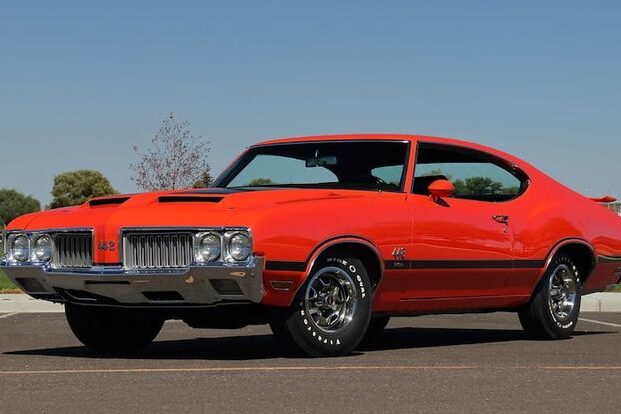
The Oldsmobile 442 was a muscle car with refinement and a growl that meant business. Its name stood for four-barrel carburetor, four-speed transmission, and dual exhaust, and it wore that identity proudly. It offered muscle without sacrificing comfort, giving drivers a taste of raw power wrapped in style. The 442 became a true performer, known for its torque-heavy V8 and sleek profile. It wasn’t the flashiest or loudest, but it had a confident swagger that set it apart. The 442 embodied the idea that strength could be subtle and sophistication could still thunder down the open road.
44. Pontiac Trans Am
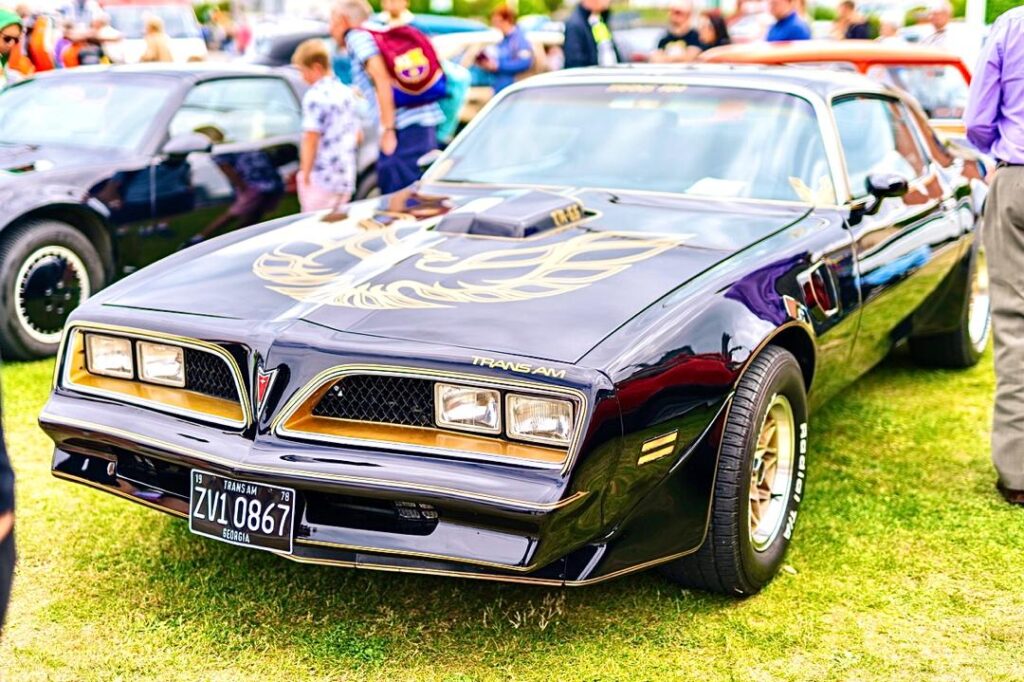
The Pontiac Trans Am roared through the 1970s like a rock star on four wheels. Its wide stance, aggressive hood scoop, and signature firebird decal made it instantly recognizable and unapologetically bold. Immortalized in Smokey and the Bandit, it represented rebellion, confidence, and the thrill of freedom. The Trans Am wasn’t just a performance machine; it was an attitude. Beneath the hood, it delivered serious power, but its real magic was the feeling it gave its driver: unstoppable, untamed, and undeniably cool. Few cars have captured cinematic charisma and road presence quite like the legendary Pontiac Trans Am.
45. Buick GNX
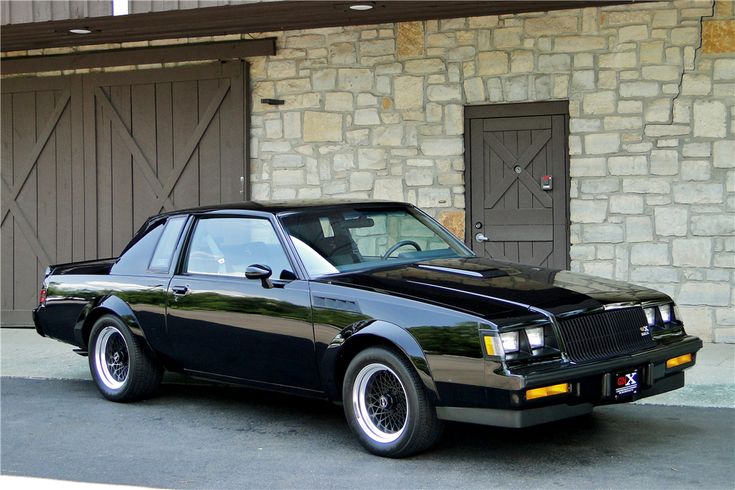
The Buick GNX was the dark horse of the 1980s, a car that looked like a sleeper but performed like a predator. Its blacked-out body, understated design, and turbocharged V6 engine created a legend that humbled many V8 rivals. This was a car of quiet menace, a perfect blend of mystery and muscle. While others flaunted bright colors and loud exhausts, the GNX thrived in subtlety, earning respect through performance, not pretense. It was the embodiment of restrained power and an icon for enthusiasts who preferred speed with sophistication. The GNX proved that true character doesn’t need to shout.
46. Dodge Monaco
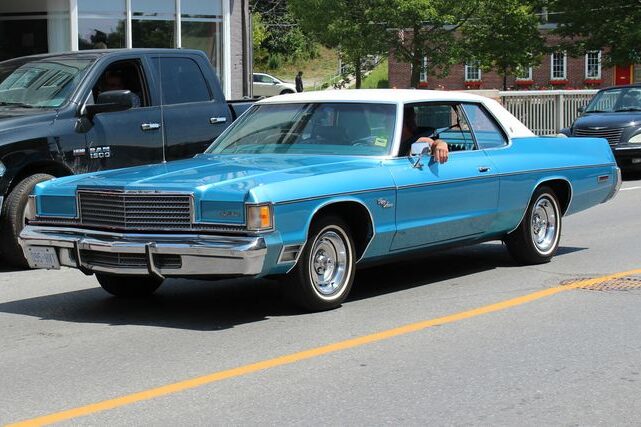
The Dodge Monaco was the kind of car that defined presence without needing flash. It was the choice of detectives, highway patrols, and movie heroes for good reason: it looked tough and dependable. With broad shoulders, a wide stance, and unmistakable mid-1970s bulk, the Monaco carried authority wherever it went. It was built during a time when cars were meant to feel substantial, not disposable. Whether chasing villains on screen or hauling families in real life, it balanced grit and grace. The Monaco’s rugged reliability and cinematic charm make it one of America’s forgotten but unforgettable classics.
47. Lincoln Mark IV
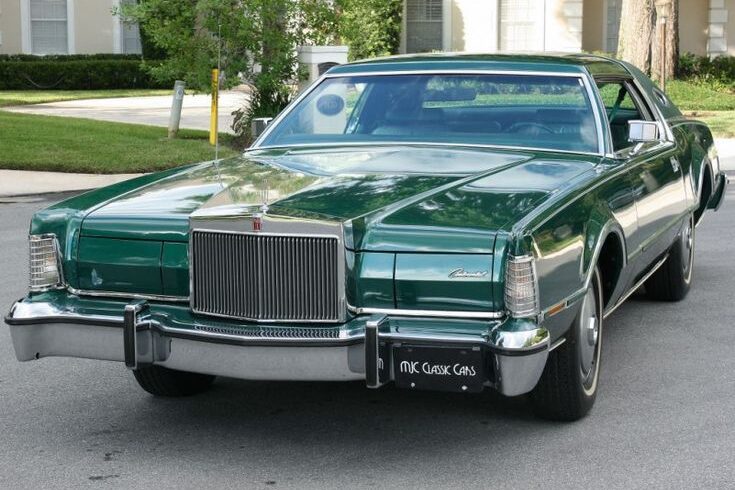
The Lincoln Mark IV was rolling luxury, pure and unapologetic. Its long hood, opera windows, and signature spare tire hump in the rear gave it unmistakable flair. It was less about performance and more about presence. This was a car that cruised, not sprinted, delivering quiet confidence and plush comfort. Inside, velour and chrome shimmered under soft light, a sanctuary of American opulence. In the 1970s, the Mark IV was the ultimate statement of success. Today, its bold lines and unapologetic excess remind us of a time when owning a car could feel like owning a piece of art.
48. Cadillac Eldorado
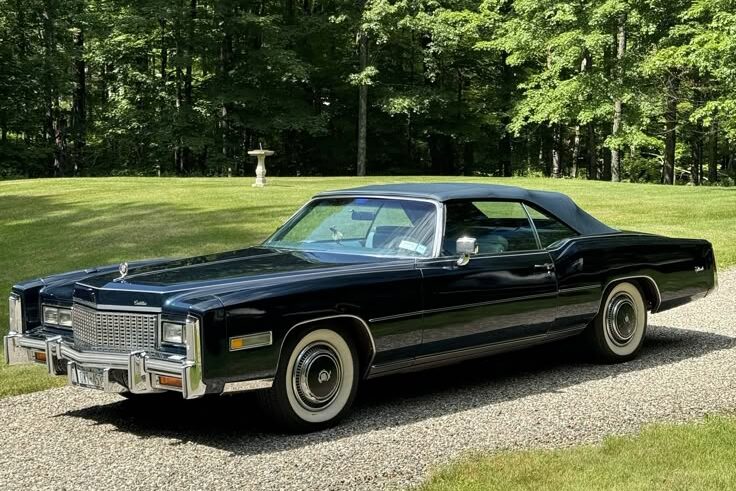
The Cadillac Eldorado represented everything American luxury once stood for. Towering in size and presence, it combined elegance, power, and indulgence with unshakable pride. Its long body, hidden headlights, and refined tailfins defined an era of automotive extravagance. Whether gliding through cities or parked in front of grand hotels, it symbolized achievement and flair. The Eldorado was more than transportation; it was a moving throne, offering quiet confidence wrapped in sculpted chrome. While modern luxury aims for minimalism, the Eldorado reveled in attention. It was the definition of grand touring charisma, unforgettable in both design and attitude.
49. Chrysler New Yorker
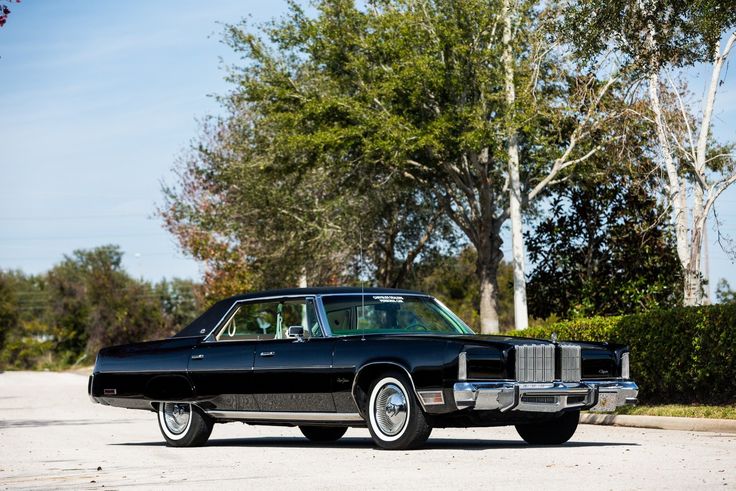
The Chrysler New Yorker was built for those who wanted sophistication without the European price tag. It stood tall in the 1970s as a full-sized statement of style, featuring plush interiors, smooth rides, and plenty of chrome sparkle. Its elegant yet commanding design carried a sense of quiet confidence. You didn’t need to shout when you drove a New Yorker; the car did it for you. It embodied middle-class ambition, combining comfort with authority. The New Yorker represented an era when American luxury was about space, comfort, and distinction. Its charm still lingers as a memory of dignified motoring.
50. Ford Ranchero
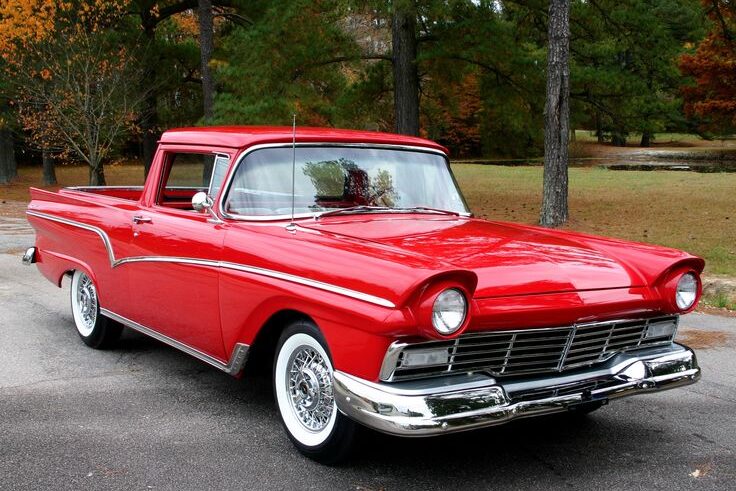
The Ford Ranchero blurred the line between car and truck long before crossovers existed. Introduced in the late 1950s, it was part pickup, part coupe, and entirely original. Its sleek front end promised style, while its open bed delivered practicality. Farmers, surfers, and city drivers alike embraced its versatility. The Ranchero proved that function and fashion could coexist beautifully. Over the years, it evolved from a simple work companion into a symbol of rugged individuality. It wasn’t built for everyone, and that was its strength. The Ranchero’s unmistakable profile remains a lasting tribute to creative, confident design.
51. AMC Javelin
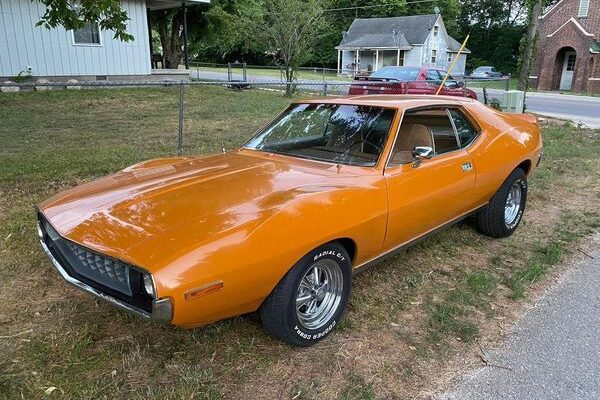
The AMC Javelin was a rebel’s answer to the muscle car scene, daring to challenge the giants. Its long, aggressive hood, swooping sides, and bold styling made it instantly stand out. AMC may have been the underdog, but with the Javelin, it showed it could deliver power and personality in equal measure. This car had presence; it was as much about attitude as it was about speed. The Javelin was proof that bravery in design could rival any big-name competitor. Its uniqueness gave it an edge, turning it into one of the most memorable American sports coupes ever made.
52. Datsun 510
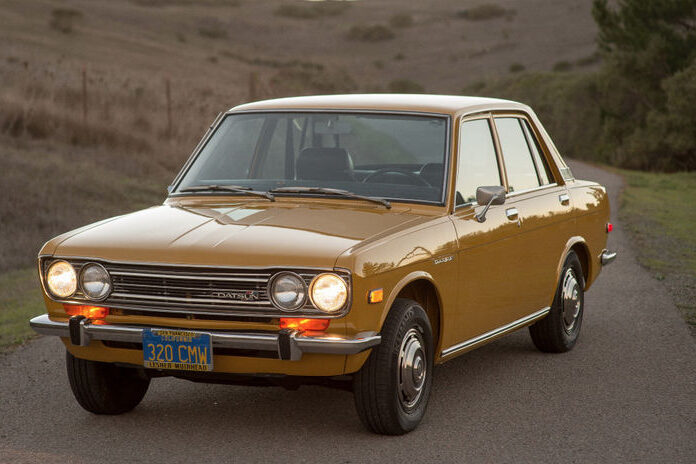
The Datsun 510 was the car that proved small could be mighty. With its boxy design, nimble handling, and solid engineering, it became a cult favorite among enthusiasts. Affordable yet competitive on racetracks, it introduced a new kind of driving excitement that emphasized precision over power. The 510’s charm came from its simplicity and honesty; it wasn’t flashy, but it was incredibly capable. It represented a shift toward smarter, more efficient performance and inspired generations of compact sports sedans. For drivers who valued connection over status, the Datsun 510 remains a timeless symbol of attainable driving joy.
53. Toyota Land Cruiser FJ40
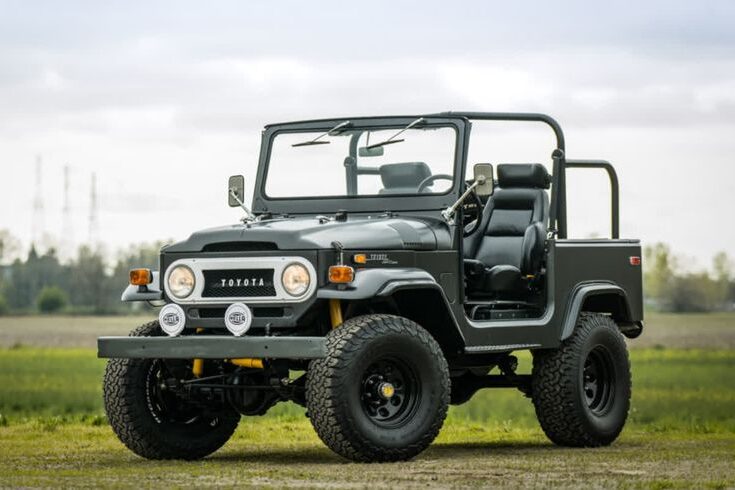
The Toyota Land Cruiser FJ40 wasn’t about luxury or speed; it was about unstoppable reliability. With its boxy frame, round headlights, and rugged stance, it was the go-anywhere vehicle before SUVs became mainstream. Built to endure deserts, mountains, and jungles, it earned its reputation through sheer dependability. Every scratch told a story, every mile an adventure. The FJ40 had a soul forged in durability and purpose, a vehicle that embodied freedom. Decades later, collectors still prize its simplicity and toughness. It wasn’t pretty in a conventional sense, but its character was pure, enduring, and undeniably heroic.
54. Mercedes-Benz 300SL Gullwing
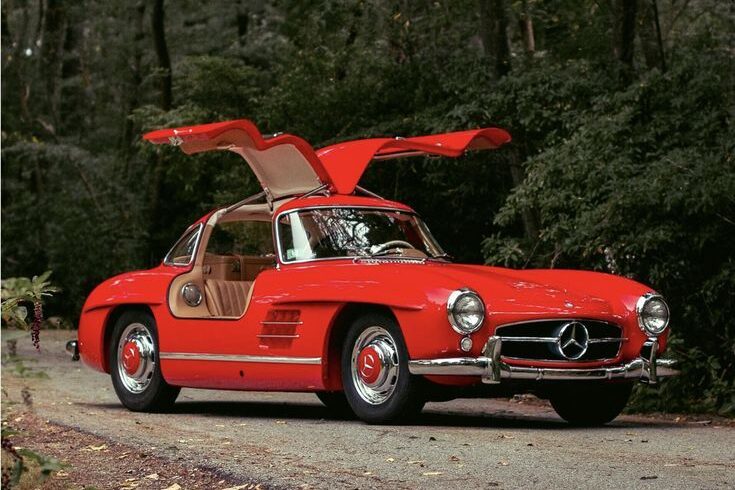
The Mercedes-Benz 300SL Gullwing remains one of the most breathtaking cars ever built. With its upward-opening doors and graceful curves, it looked more like a sculpture than a machine. Beneath its beauty was innovation: a lightweight frame and fuel-injected engine that made it one of the fastest cars of its time. Yet beyond its performance, it radiated elegance and grace. Every detail spoke of craftsmanship and confidence. The Gullwing wasn’t just a car to drive; it was one to behold, the perfect balance of engineering and artistry that continues to inspire designers and dreamers alike.
55. BMW 2002
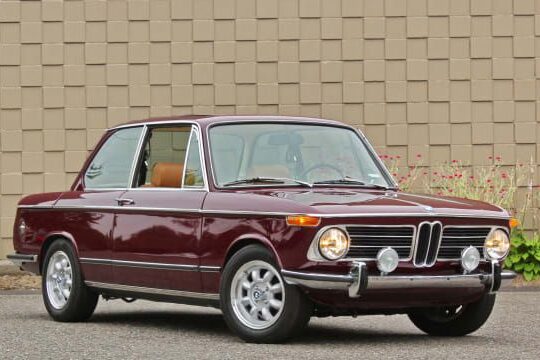
The BMW 2002 defined the sports sedan as we know it. Compact, purposeful, and playful, it brought performance driving to everyday people. Its boxy design was simple but timeless, and its lively handling made every corner an invitation. The 2002 balanced practicality with pure driving joy, something few modern cars manage. It became the heartbeat of BMW’s identity, a car that proved excitement didn’t require extravagance. Enthusiasts loved it for its honesty and connection between driver and machine. The BMW 2002 was personality in motion, charming in its simplicity and unforgettable in its pure driving soul.
56. Alfa Romeo Spider
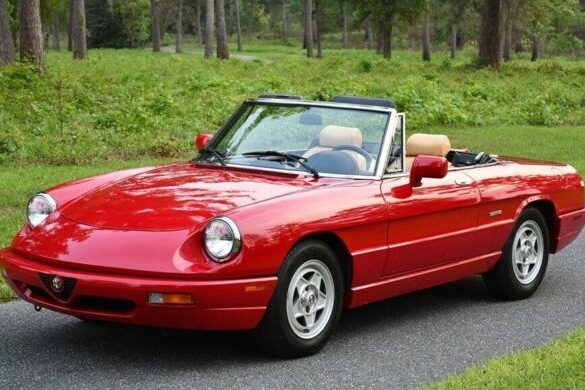
The Alfa Romeo Spider was romance on wheels. With its delicate lines, low-slung body, and Italian flair, it embodied the joy of open-air driving. Popularized in films and adored by enthusiasts, it captured the essence of carefree motoring. Every drive felt like a scene from a European adventure. Though not the most powerful car, its character came from the way it made drivers feel alive. The Spider celebrated emotion over efficiency, proving that charm and beauty could outweigh sheer numbers. It was elegance, spirit, and passion wrapped into one unforgettable Italian masterpiece that defined classic motoring allure.
57. Saab 900 Turbo
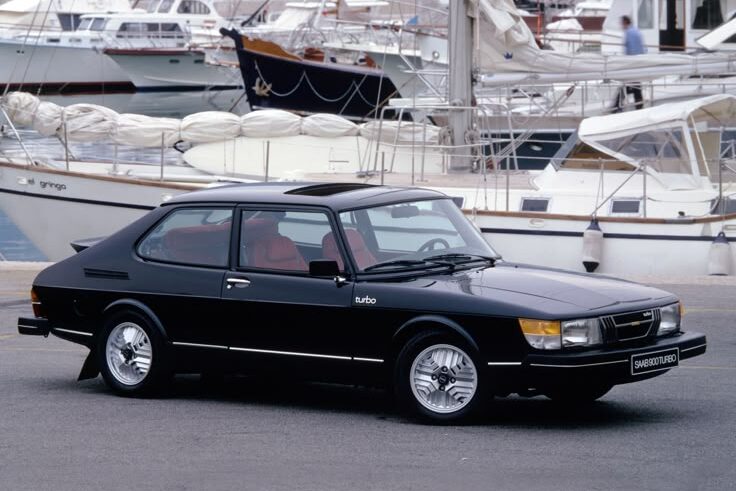
The Saab 900 Turbo combined eccentricity with innovation, creating a car unlike any other. Its wraparound windshield, unique dashboard layout, and turbocharged engine reflected Scandinavian practicality mixed with flair. It was quirky but deeply capable, a car that appealed to thinkers and nonconformists. The 900 Turbo wasn’t about showing off; it was about intelligent confidence. Its hatchback versatility and distinctive styling made it instantly recognizable. Saab built cars with personality, and the 900 Turbo was its masterpiece. It proved that individuality and engineering could coexist, leaving behind a legacy of quiet strength and unmistakable character.
58. Volvo P1800
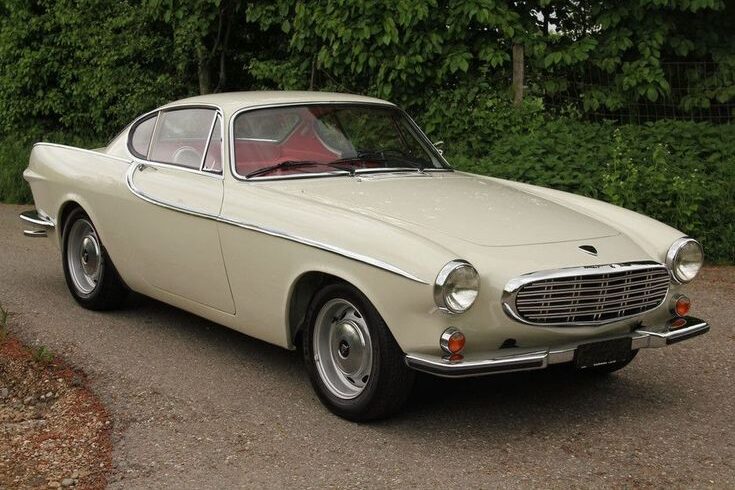
The Volvo P1800 was elegance wrapped in restraint, a graceful coupe that radiated timeless charm. Best known as the car driven by Roger Moore in The Saint, it married Scandinavian design sensibility with sportiness. Its curved lines, chrome detailing, and compact proportions gave it sophistication without arrogance. The P1800 was built to last, and many still run today, a testament to its enduring craftsmanship. It wasn’t the loudest or fastest, but it had undeniable presence. In a world obsessed with reinvention, the P1800 remains a reminder that true character never fades, it simply grows more graceful with age.
Reading through these classics reminds us that the best cars are often those that take a risk, tell a story, or simply refuse to conform.
Which of these legends left the biggest mark on your memory, and what modern car do you think will be remembered for its character decades from now?
This story Whatever Happened to Cars with Character? 58 Rides We’ll Never Forget was first published on Daily FETCH


